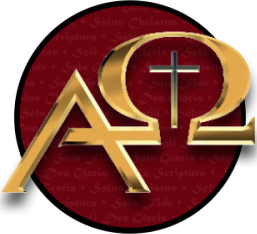If the various Byzantine positions represent the extreme documentary approach to textual criticism, relying mainly on external evidence, and the Thoroughgoing Eclectic position represents the extreme evidential approach with regard to the text contained within those manuscripts, relying mainly on internal evidence, then the Reasoned Eclectic position, at least as it claims, sits somewhere in the middle. This position, while having a distinct bias toward internal evidence, does acknowledge the importance of external evidence to determine a particular reading.
As with Thoroughgoing Eclecticism, Reasoned Eclecticism has its roots in the work of Westcott and Hort. However, many of those who hold to Reasoned Eclecticism have departed from some of Westcott and Hort’s views, or have modified them to accommodate more recent evidence. For example, Westcott and Hort placed a lot of faith in codices B and Aleph, Sinaiticus and Vaticanus. For them, those were the manuscripts that were closest to the autographs, and were the standard by which all other readings were judged. This is why these manuscripts were the main targets of Burgon’s attacks in the late nineteenth century, and why those who still cling to Burgon’s views (for the most part, those who represent the Majority Text and Ecclesiastical Text positions) spend their time attacking these same two manuscripts. Modern Eclectic scholars, however, recognize that at the time Westcott and Hort wrote, these manuscripts were the best they had. Apart from these and one papyrus fragment, the rest of their manuscript evidence was relatively late. While recognizing the importance of B and Aleph to the textual tradition, modern Eclectic scholars weigh the evidence from across the entire spectrum of manuscripts, including both Byzantine text types and minuscules.
One of the major differences between the Reasoned Eclectic position and the Byzantine Priority position with regard to the history of the text is the Reasoned Eclectic position does not start with the presumption that the original text was of a particular text family. Granted, they will say that they believe the Alexandrian type to be closest to the original, but, for the most part, they do not claim that the original was an Alexandrian manuscript. For example, in his book The King James Only Controversy, Dr. James White states, “Most scholars today…would see the Alexandrian text-type as representing an earlier, and hence more accurate form of text than the Byzantine text-type” (p. 43). Also, note the words of Dr. Bruce Metzger: “Though most scholars have abandoned Hort’s optimistic view that codex Vaticanus (B) contains the original text almost unchanged except for slips of the pen, they are still inclined to regard the Alexandrian text as on the whole the best ancient recension and the one most nearly approximating the original” (Text of the New Testament, p. 216).
From this perspective, one can understand how Robinson’s objection that Eclectics produce readings unknown in the textual tradition causes no problem to the Eclectic viewpoint. They acknowledge that the original is not extant, and they also acknowledge that not one text type is in itself totally representative of the autographs. It is only reasonable to expect, therefore, that the autograph will not look precisely like anything in the extant textual tradition, given agreed upon assumptions about the early corruption of the text and the small amount of manuscript evidence from the earliest days of the church.
There is agreement, though, that the various text-types were generated from the work of the many (mostly non-professional) scribes that copied the various books of the New Testament over the first two hundred years of the church. According to the Reasoned Eclectics, the Alexandrian text type represents the earliest and most accurate form of the text, noted by its conciseness, while the Byzantine text type is a later creation due to scribal conflation of readings into one text. In other words, there is a greater tendency within the Byzantine text type to include textual evidence rather than to exclude, and to harmonize rather than support a single reading. It must be noted that these are tendencies. The Reasoned Eclectic position is often criticized for claiming that the Byzantine text contains conflations while the Alexandrian does not. Such critics go on to posit examples of conflation within the Alexandrian text type. However, modern Reasoned Eclectics will not deny that such scribal tendencies exist within the Alexandrian tradition. However, while these kinds of phenomena exist in the Alexandrian text, they are not the overall tendency of this text type.
Aland sees the difference in the Alexandrian and Byzantine text types as stemming from the churches in which they flourished. In his view, a more uniform church structure within a diocese will produce a more uniform text type as the various New Testament books are copied from church to church. While the churches of Egypt were very loose-knit, the churches of the Byzantium region were more united. Over time, this more homogeneous text would exert its influence over the texts of Egypt to become a standard text (Aland, Text of the New Testament, pp. 55-56).
The various forms of the text were stabilized within the first five centuries of the church. There is evidence (contrary to the claims of the Byzantine text proponents–whether Textus Receptus, Ecclesiastical Text, Majority Text, or Byzantine Priority) that shows that the early Alexandrian texts were used, possibly more so than many of their Byzantine counterparts. One example of this is the fact that a number of extant manuscripts–including codex Sinaiticus (Aleph)–have scribal emendations written upon the text by later hands. If, as Byzantine text supporters like to suppose, Byzantine texts wore out from use in the first three centuries of the church, why do many extant Byzantine texts fail to show the same kind of scribal activity and, instead, show clean, unchallenged pages? This argument was put forward by Daniel Wallace in his article “Majority Text Theory: History, Methods and Critique,” published in the Journal of the Evangelical Theological Society (June 1994; page 206). In the same place Wallace also capitalizes on the lack of evidence for the Byzantine text type in the first few centuries of the church by asking the question: “Are we to suppose that every single ‘good’ NT somehow wasted away–that no historical accident could have preserved even one for the first 350 years?” Rather, the texts of the first few centuries of the church were generally undisciplined and, while some were distinctly Alexandrian in text type, they displayed a mixture of text types and readings.
As much as widespread persecution of the church influenced the means by which copies of the New Testament was made, in the view of the Reasoned Eclectics, this same persecution, along with other events and factors of church history, influenced which manuscripts survived the first five centuries of the church and became dominant. Holmes notes that Diocletian’s first edict contained specific instructions regarding the confiscation and burning of copies of the Scriptures (see his article “The Case for Reasoned Eclecticism” in Rethinking New Testament Textual Criticism, p. 95, n. 51). This would help to account for the relative lack of manuscripts from this period, and the general paucity of Alexandrian manuscripts.
After Constantine’s rise to power and the legalization of Christianity, the various text types were copied more carefully and propagated more extensively. The solidifying of the text types could be said to begin here. However, the Islamic invasions of the seventh century brought Islam into Alexandria, Jerusalem, Antioch, North Africa, Egypt, Palestine, Syria, and Mesopotamia. These places either succumbed to conquest and the Christians were forced to live under Muslim rule, or the Christian communities disappeared completely. This situation would at the very least curtail the transmission of New Testament texts, and, inasmuch as the Muslims destroyed Christian literature (a disputed point, but Holmes notes that the 30,000 volume library in Caesarea was destroyed by the Muslims in 638 B.C, which would at least make such activity possible), would prove devastating for the survival of biblical manuscripts. It is of great interest, then, that the only region where Christendom held firm against the Muslims for close to 1,000 years was the region around Byzantium. Greek-speaking Christians in this area managed to fend off the invaders and preserve their churches, their language, and their Scriptures until the fall of Byzantium in 1453.
For the Reasoned Eclectic, the foregoing briefly but adequately explains why only a few manuscripts of distinctly Alexandrian text type remain, why there are no manuscripts of distinctly Byzantine text type until the fourth century, and why the Byzantine text type became so dominant later.
As mentioned earlier, the Reasoned Eclectic viewpoint is one that, while acknowledging a bias toward internal evidence, does pay close regard to external evidence. In light of this, the approach to a variant reading taken by such a scholar would be to first evaluate the various possible readings presented by the critical text (i.e., either NA27 or UBS4) in light of external evidence: geographical spread, age, and text types. While the use of versions and early church fathers has been of great influence to the Byzantine school, these are only of secondary (if that) importance to the Reasoned Eclectic. Sufficient evidence should be found within the Greek manuscript tradition (see Aland, p. 280). Arguments against the use of the fathers and versions include the fact that, unless the father is commenting on a passage of Scripture, they can rarely be trusted to quote a passage verbatim such that the Greek text known to him can be determined. Also, since the extant writings of the fathers are themselves copies, one cannot know for certain how much scribal activity has entered into the reproduction of the father’s text. At best, the fathers are good for ascertaining whether a particular passage was known to them at that time. There is still no evidence that any church father used a Byzantine text type in his quotation of Scripture.
After this, the scholar can begin the examination of the text in terms of internal evidence: difficult readings, influence of contemporary church or theological issues, harmonization, and the author’s style. Internal evidence, however, can never be solely determinative. In other words, the correct reading will have the support of both internal and external evidence. For a more detailed analysis of this process with illustrative passages, see Metzger, The Text of the New Testament, pp. 216-246. See also Aland, The Text of the New Testament, pp. 280-316.
Part 13: Concluding Thoughts–coming soon…


